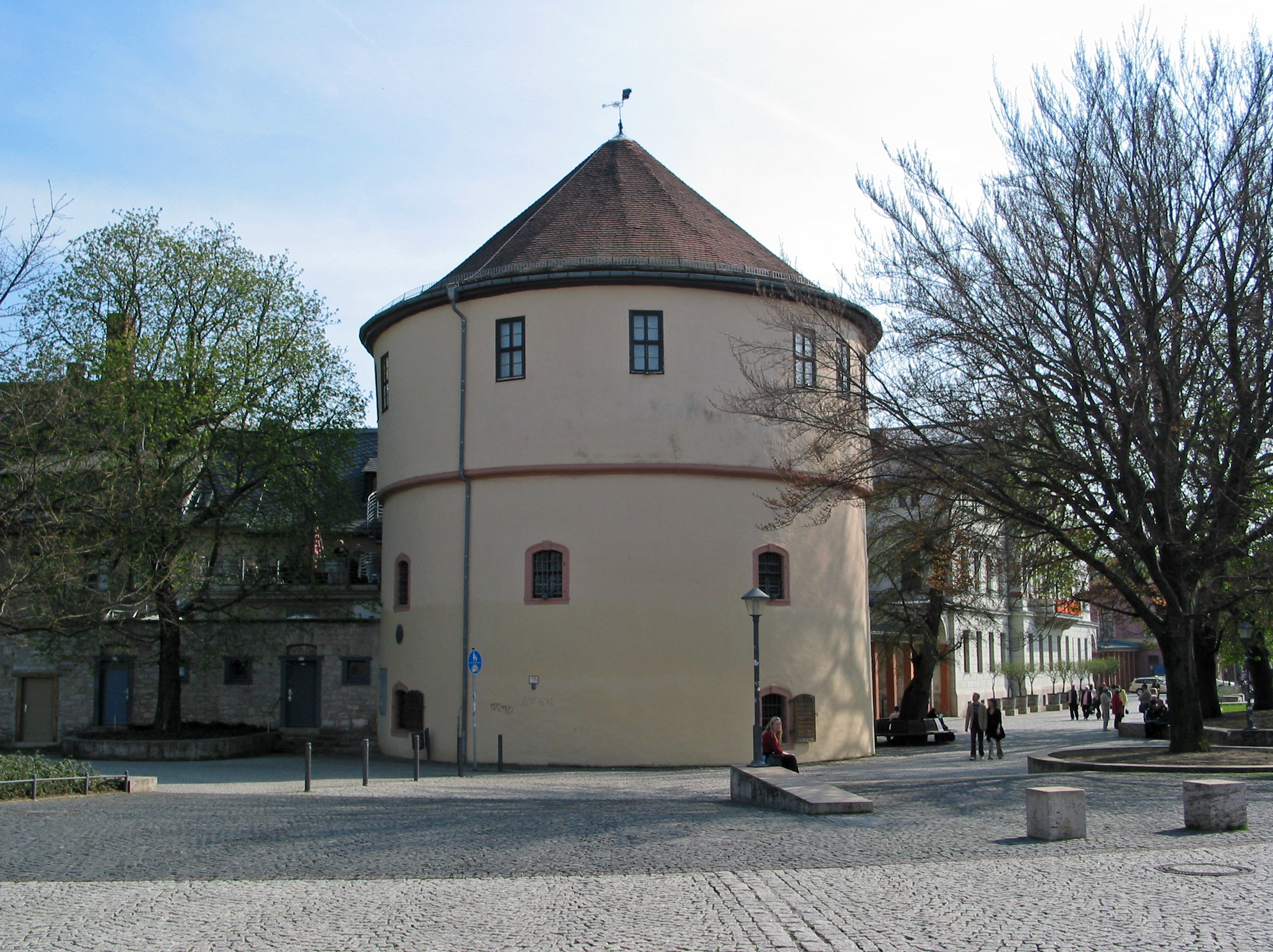Weimar
 Weimar; }} is a city in the German state of Thuringia, in Central Germany between Erfurt to the west and Jena to the east, southwest of Leipzig, north of Nuremberg and west of Dresden. Together with the neighbouring cities of Erfurt and Jena, it forms the central metropolitan area of Thuringia, with approximately 500,000 inhabitants. The city itself has a population of 65,000. Weimar is well known because of its cultural heritage and importance in German history.
Weimar; }} is a city in the German state of Thuringia, in Central Germany between Erfurt to the west and Jena to the east, southwest of Leipzig, north of Nuremberg and west of Dresden. Together with the neighbouring cities of Erfurt and Jena, it forms the central metropolitan area of Thuringia, with approximately 500,000 inhabitants. The city itself has a population of 65,000. Weimar is well known because of its cultural heritage and importance in German history.The city was a focal point of the German Enlightenment and home of the leading literary figures of Weimar Classicism, Johann Wolfgang von Goethe and Friedrich Schiller. In the 19th century, composers such as Franz Liszt made Weimar a music centre. Later, artists and architects including Henry van de Velde, Wassily Kandinsky, Paul Klee, Lyonel Feininger, and Walter Gropius came to the city and founded the Bauhaus movement, the most important German design school of the interwar period.
The political history of 20th-century Weimar was volatile: it was the place where Germany's first democratic constitution was signed after the First World War, giving its name to the Weimar Republic (1918–33), which existed between the end of World War I and the rise of the Nazis. It was also one of the cities mythologized by Nazi propaganda.
Until 1948, Weimar was the capital of Thuringia. Many places in the city centre have been designated as UNESCO World Heritage Sites, either as part of the Classical Weimar complex (containing monuments to the classical period of Weimar in 18th and 19th centuries) or the Bauhaus complex (containing buildings associated with the Bauhaus art school). Heritage tourism is one of the leading economic sectors of Weimar.
Noted institutions in Weimar are the Bauhaus University, the Liszt School of Music, the Duchess Anna Amalia Library, and two leading courts of Thuringia (the Supreme Administrative Court and Constitutional Court). In 1999, Weimar was the European Capital of Culture. Provided by Wikipedia
1
2
3
4
5
6
7
8
9
10
11
12
Published 2000
“...Kunstsammlungen <Weimar>...”
Book
13
Published 1989
“...Staatliches Bauhaus <Weimar>...”
Book
14
by Herder, Johann Gottfried
Published 1994
Other Authors: ';
“...Carl Friedrich <Weimar, Erbprinz>...”Published 1994
Manuscript
15
Published 1973
“...Staatliche Kunstsammlungen <Weimar>...”
Book
16
17
Published 1994
“...Thüringisches Hauptstaatsarchiv <Weimar >...”
Book
18
Published 1809
“...Geographisches Institut <Weimar>...”
Musical Score
19
20


